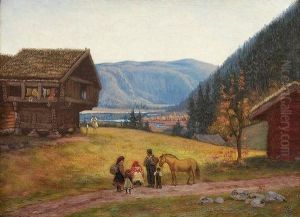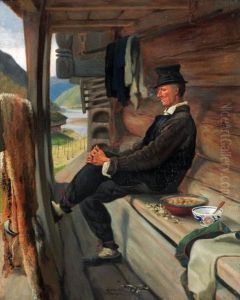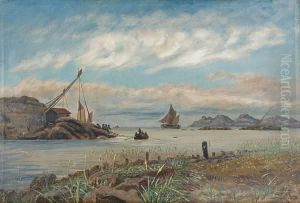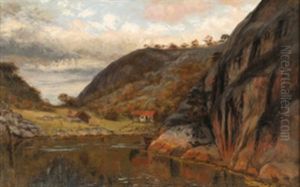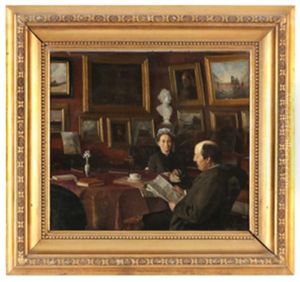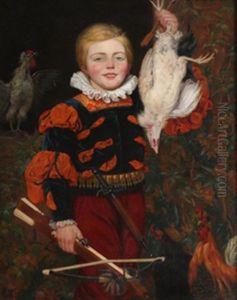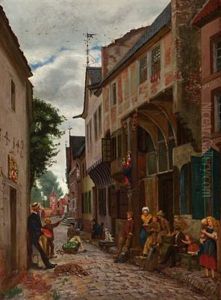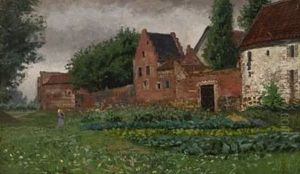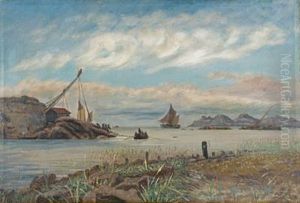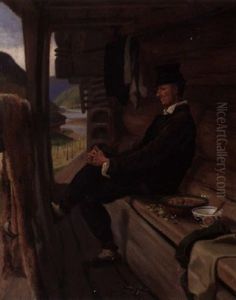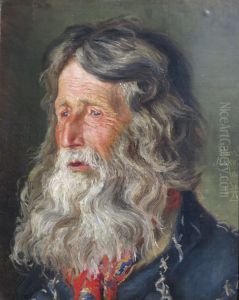Olaf Isaachsen Paintings
Olaf Isaachsen was a Norwegian painter, known for his landscape and genre paintings, born on July 19, 1835, in Mandal, a town in the southern part of Norway. He grew up in a society that was just beginning to develop a national identity, a process that was reflected in the arts with a burgeoning interest in Norwegian landscapes and everyday life.
Isaachsen began his artistic education at the age of 16 when he moved to Christiania (now Oslo) and studied under various painters, including Johan Fredrik Eckersberg, a leading Norwegian artist of the time. He continued his studies in Düsseldorf, Germany, which was a significant center for art training in the mid-19th century, and later in Paris, France. His time in Düsseldorf and Paris exposed him to the broader European art scene and allowed him to refine his skills in painting.
Returning to Norway, Isaachsen became known for his ability to capture the unique Norwegian landscape with a realistic yet romantic approach. His works often depicted the raw beauty of Norway's countryside, its coastal areas, and the life of its people. He was particularly skilled in the use of light and color, which gave his paintings a lively and atmospheric quality.
During the 1870s, Isaachsen spent considerable time in the small coastal town of Skagen in Denmark, where he became associated with the Skagen Painters, a group of Scandinavian artists who gathered to paint the unique light and landscape of the area. His time in Skagen had a significant influence on his work, as seen in the luminous quality of his later paintings.
Olaf Isaachsen's contributions to Norwegian art were recognized in his time, and he was awarded multiple scholarships and honors, which allowed him to travel and exhibit his work. Despite his success, he struggled with mental health issues later in life and was admitted to a psychiatric hospital where he spent his last years. He passed away on October 10, 1893, in Kristiansand, leaving behind a legacy as one of Norway's important painters of the 19th century, whose works are still celebrated for their depiction of Norwegian nature and culture.
